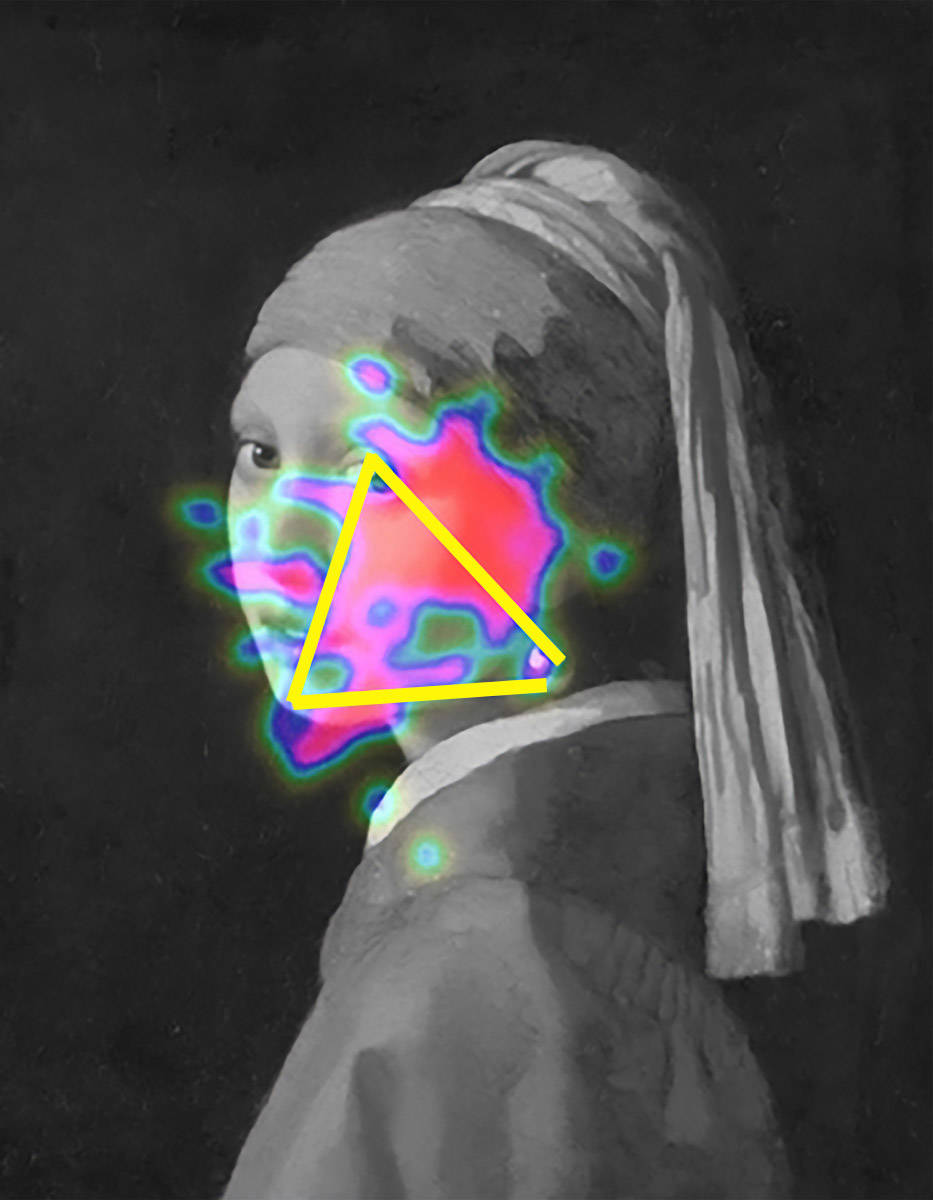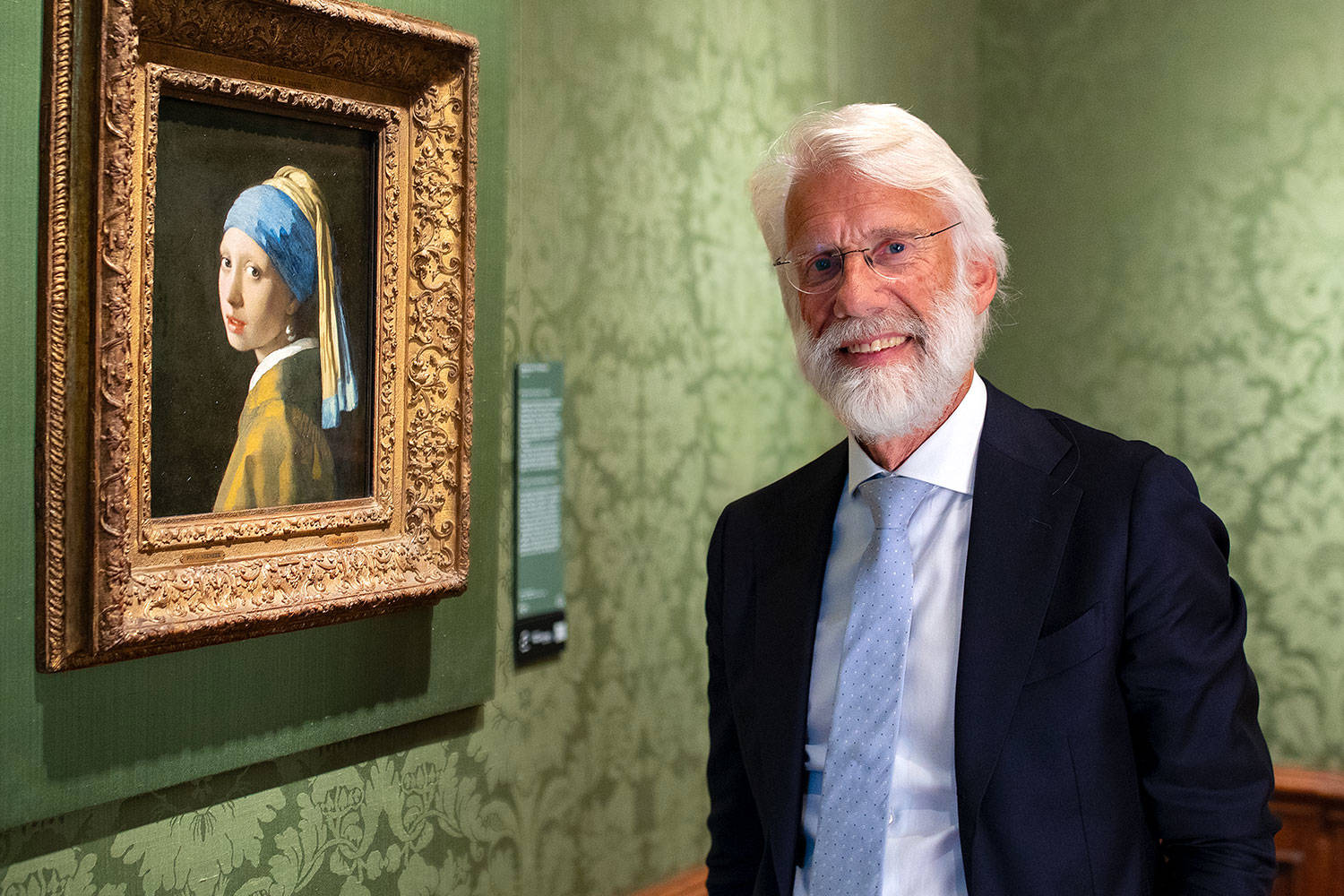
Neurological research has shown that looking at a real painting at the Mauritshuis activates the brain differently than looking at a reproduction of the same painting. The viewer’s emotional response is ten times stronger when they are face to face with the painting in the museum. Researchers used electroencephalograms (EEGs) to reveal that real artworks, including Girl with a Pearl Earring, elicit a powerful positive response much greater than the response to reproductions. The secret behind the attraction of the ‘Girl’ is also based on a unique neurological phenomenon. Unlike other paintings, she manages to ‘captivate’ the viewer, in a ‘sustained attentional loop’. This is the first time that the Mauritshuis has commissioned this type of research into its paintings.
Stronger emotional response
Both the Girl and the four benchmark paintings* had much greater ‘pull’ in real life than the same works in reproduction: ten times more, in fact. According to the researchers, this suggests that looking at art elicits a strong emotional response, which is also affected by the ambience of the setting (the frame, the lighting etc.). But the Girl clearly drew the most attention of all the paintings studied.
Eyes-mouth-pearl
As with most faces, visitors look first at the Girl’s eyes and mouth, but then their attention shifts to the pearl, which then guides the focus back to the eyes and mouth, then to the pearl, and so on. This phenomenon (known as a ‘sustained attentional loop’), which makes viewers look at the painting for longer than any other in the Mauritshuis study, was identified only in the case of Girl with a Pearl Earring.
Self-reflection
Another striking outcome of the study is the fact that, when someone looks at the Girl, it is the precuneus that is by far the most stimulated part of their brain. The precuneus is involved in one’s sense of self, self-reflection and episodic memories. This result for the Vermeer’s famous painting was much more significant in the study than for four other paintings from the Mauritshuis collection studied in the same way, by way of a benchmark.
The study
The Mauritshuis commissioned the study from Neurofactor, which took responsibility for the research itself. The museum had stipulated that the study must be scientifically sound, so Neurofactor brought in Neurensics, an independent consumer neuroscience research agency. Professor Victor Lamme, Dr. H. Steven Scholte and Andries van der Leij (co-owners of Neurensics) are responsible for the scientific reliability of all the company’s research, and they also teach at the University of Amsterdam. Liselore Tissen (Leiden University, TU Delft, Royal Netherlands Academy of Arts and Sciences) advised the team as an independent external scientist. She had previously studied how 3D reproductions can enhance visitors’ perception of Girl with a Pearl Earring and their museum experience. This recent study was a follow-up to her work.
Conducting the research
The study was performed in two phases. First, ten individuals wearing EEG headsets and eye trackers followed a certain route round the Mauritshuis, which included the Girl and four other paintings from the collection. The same ten test subjects were then shown three reproductions** of the paintings in the Maurithuis library, again wearing an EEG headset and eye tracker. Ten other test subjects did the same, but looked at the reproductions first and then went round the museum. In phase two of the study, a ‘functional MRI’ brain scan (fMRI) was performed on 20 respondents at the University of Amsterdam. During the scan, the test subjects were shown reproductions of the five paintings from the Mauritshuis. Five subjects participated in both phases of the study.
Martine Gosselink, director of the Mauritshuis: ’We see reproductions of famous paintings everywhere, particularly Vermeer’s Girl with a Pearl Earring. This study has shown once and for all that a visit to the Mauritshuis or another museum has much greater emotional value.’
Martin de Munnik, co-founder & business developer Neurensics: ‘This was the most special assignment for us in recent years. Being allowed to look at the effect of a famous painting like the Girl was a unique experience for our scientists. That the Girl is special was predictable. But the why was also a surprise to us. The Sustained Attentional Loop discovered, is the factual explanation behind all kinds of opinions people had about the attention the Girl demands from us. An impact that is amplified when the work is admired in a museum.’
Erik Scherder, professor of neuropsychology, Vrije Universiteit Amsterdam: ‘Watching art stimulates your brain on several levels. It evokes excitement, triggers imagination and makes you think about what you see. It's an ultimate enrichment, activating your brain to the fullest.’
Liselore Tissen, Leiden University, TU Delft, Royal Netherlands Academy of Arts and Sciences: ‘It is a unique thing for a museum to use art not only to bring together researchers from different disciplines, but also to use their work in practice, putting the visitor experience first.’
Vera Carasso, director of the Netherlands Museum Association: ’We live in a time when we are increasingly confronted with copies and interpretations of reality. You might think that real, genuine art or objects therefore become less important, but the opposite is true: real is actually becoming more important. An encounter with a real work of art is much more intense than with a copy. How wonderful that this effect has now been scientifically demonstrated and can be seen in brain activity. The results of this new research are important and relevant for the entire museum sector.‘
*The 'benchmark' paintings, besides the Girl, were: Rembrandt, Self-Portrait, 1669; Rembrandt, The Anatomy Lesson, 1632; Vermeer, View of Delft, c. 1660-6; and Van Honthorst, The Violin Player, 1626.
**Vermeer, Girl; Rembrandt, Self-Portrait; Van Honthorst, The Violin Player. It is not possible to obtain life-sized reproductions of The Anatomy Lesson and View of Delft.


